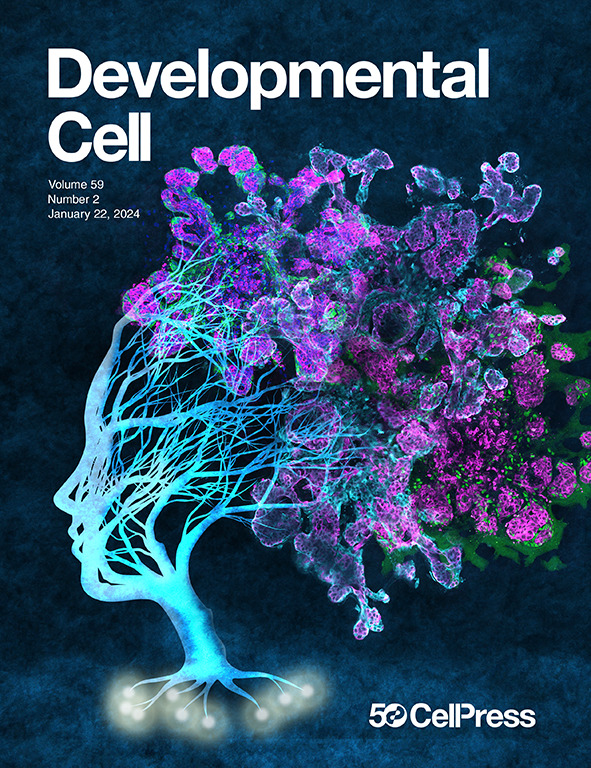Phosphorylation dynamics of RAF12 and PP2C control SnRK2 activity under hyperosmotic stress in Arabidopsis
IF 8.7
1区 生物学
Q1 CELL BIOLOGY
引用次数: 0
Abstract
Hyperosmotic stress rapidly induces the activation of SNF1-related protein kinases 2 (SnRK2s) that orchestrate plant adaptive responses. However, prolonged activation can unbalance cellular homeostasis. Molecular mechanisms that manage the activation and subsequent deactivation of SnRK2s during osmotic stress signaling are poorly understood. Our findings suggest that type 2C protein phosphatases—ABI1, ABI2, HAI1, and HAI2—cooperatively suppress SnRK2 activities in Arabidopsis. Notably, abi1abi2hai1hai2 quadruple mutant displays reduced hyperosmotic stress sensitivity and partially constitutive stress responses even under normal conditions. We also discovered that B2 Raf-like MAPKKK (RAF12) inhibits HAI2 phosphatase activities through the direct phosphorylation of HAI2, releasing the SnRK2 inhibition. Interestingly, upon hyperosmotic stress, RAF12 rapidly forms reversible condensates. RAF12 condensation, driven by its intrinsically disordered region, potentially facilitates RAF12 kinase activation. Our research elucidates that the RAF-PP2C-SnRK2 phosphorylation switch is involved in perceiving hyperosmotic stress, initiating and amplifying osmotic stress signaling, and subsequently shaping plant adaptive responses.

高渗胁迫下,拟南芥中RAF12和PP2C的磷酸化动态调控SnRK2活性
高渗胁迫可快速诱导snf1相关蛋白激酶2 (SnRK2s)的激活,而snf1相关蛋白激酶2负责协调植物的适应性反应。然而,长时间的激活会使细胞内稳态失衡。在渗透胁迫信号传导过程中,SnRK2s激活和随后失活的分子机制尚不清楚。我们的研究结果表明,2C型蛋白磷酸酶abi1、ABI2、HAI1和hai2共同抑制拟南芥中SnRK2的活性。值得注意的是,abi1abi2hai1hai2四重突变体即使在正常条件下也表现出较低的高渗胁迫敏感性和部分本构性胁迫反应。我们还发现B2 Raf-like MAPKKK (RAF12)通过直接磷酸化HAI2来抑制HAI2磷酸酶活性,释放SnRK2抑制。有趣的是,在高渗胁迫下,RAF12迅速形成可逆凝聚物。由其内在无序区域驱动的RAF12缩聚可能促进RAF12激酶的激活。我们的研究阐明了RAF-PP2C-SnRK2磷酸化开关参与感知高渗胁迫,启动和放大渗透胁迫信号,并随后形成植物的适应性反应。
本文章由计算机程序翻译,如有差异,请以英文原文为准。
求助全文
约1分钟内获得全文
求助全文
来源期刊

Developmental cell
生物-发育生物学
CiteScore
18.90
自引率
1.70%
发文量
203
审稿时长
3-6 weeks
期刊介绍:
Developmental Cell, established in 2001, is a comprehensive journal that explores a wide range of topics in cell and developmental biology. Our publication encompasses work across various disciplines within biology, with a particular emphasis on investigating the intersections between cell biology, developmental biology, and other related fields. Our primary objective is to present research conducted through a cell biological perspective, addressing the essential mechanisms governing cell function, cellular interactions, and responses to the environment. Moreover, we focus on understanding the collective behavior of cells, culminating in the formation of tissues, organs, and whole organisms, while also investigating the consequences of any malfunctions in these intricate processes.
 求助内容:
求助内容: 应助结果提醒方式:
应助结果提醒方式:


